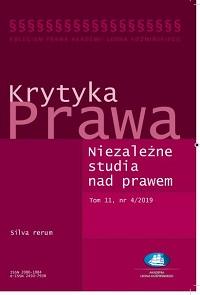Granice strefy Schengen w obliczu początku pandemii koronawirusa – zasady prawne i możliwe scenariusze w 2020 roku
Anna Szachoń-Prszenny
Katolicki Uniwersytet Lubelski Jana Pawła II
12/2020 12 (4) Krytyka Prawa. Niezależne studia nad prawem
DOI 10.7206/kp.2080-1084.414








